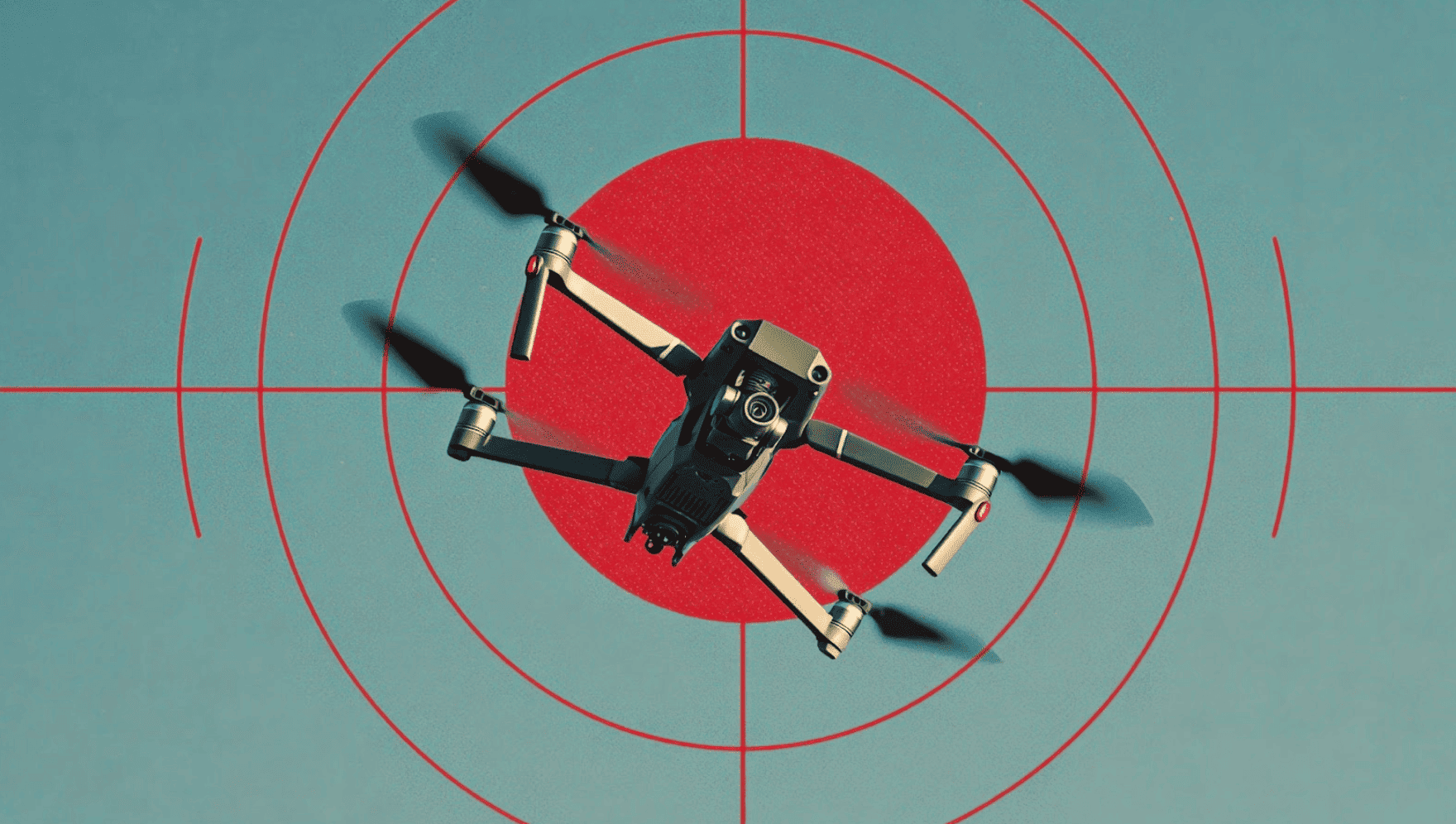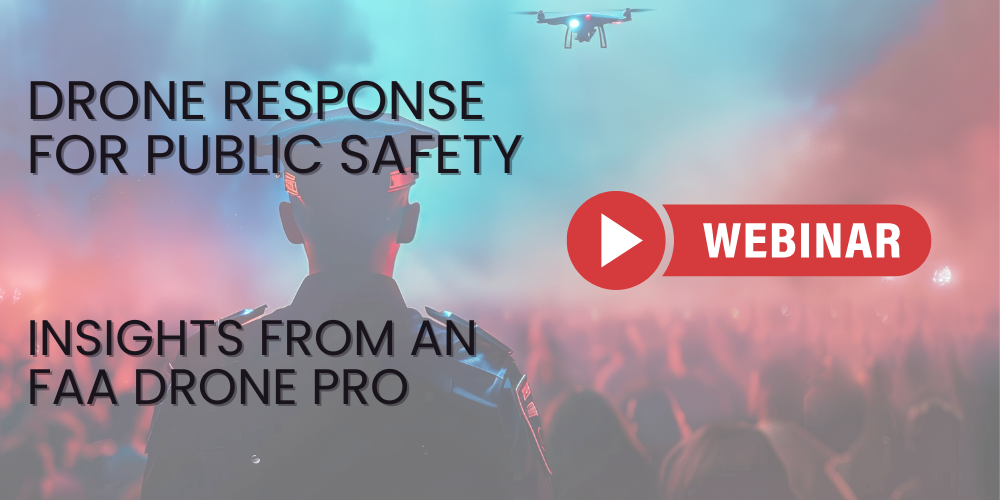Summary: Preparing law enforcement for expanded drone mitigation: balancing detection, training, legal risks, and public safety. Legal restrictions in the U.S. severely limit active drone mitigation—non-federal entities cannot legally jam or shoot down a drone without a waiver.
Instead, the most effective mitigation starts with detection and pilot location, allowing security teams to assess intent and respond safely.
The conversation around drone mitigation capabilities for law enforcement agencies is gaining momentum, with increasing calls for national legislation to grant broader access to these tools. This article helps stakeholders consider how to prepare for expanded capabilities. It’s not a simple fix. There’s a lot to consider.
The Continued Importance of Drone Detection and Locationing
When law enforcement gains access to drone mitigation tools, robust detection and location capabilities must be maintained—agencies cannot mitigate what they cannot see or locate. The Federal Aviation Administration’s Remote ID mandate provides a critical component of this layered approach to airspace safety by requiring drones to broadcast identification and location information. This makes it easier for authorities to distinguish legitimate flights from potentially unauthorized or malicious ones, strengthening overall mitigation efforts.
A Layered Approach to Drone Mitigation Might Look Like This:
Detect/Verify: Detect unauthorized drones as far away as possible, providing critical time for assessment and response. Remote ID (RID) detection immediately assists by identifying if the drone broadcasts its identification and location. If it broadcasts RID, agencies quickly verify its legitimacy against flight plans or known authorized operations, reducing the need for immediate intervention.
Assess Intent: Accurately locate the drone and its operator, which is crucial for effective mitigation and any subsequent investigation. Without precise location data, mitigation efforts can be inefficient or even misdirected, potentially impacting legitimate drone operations. RID detection significantly aids this step; if a drone does not broadcast RID, it immediately raises a red flag, prompting increased scrutiny of its behavior and trajectory and suggesting a potential intent to evade identification. If it broadcasts RID, agencies gain enhanced situational awareness, understanding the drone's purpose and trajectory to better assess its intent.
Coordinate/De-escalate: Assess the drone's trajectory, payload capacity, and behavior to determine the appropriate response. RID detection facilitates coordination; knowing the identity of legitimate drone operators allows agencies to coordinate with them in public events or emergencies, and potentially de-escalate situations by confirming their authorized status. Knowing the pilot location so officers can find the pilot to assess intent helps prevent incidents.
Mitigate: Based on the assessment, determine if mitigation is necessary. If a drone is non-compliant with RID, agencies may prioritize mitigation due to the inherent lack of transparency. Conversely, if it is compliant, agencies focus resources on potential threats, rather than expending effort on legitimate flights.
Document: Document all aspects of the drone incident and the response. The presence or absence of RID data provides crucial information for a targeted investigation, helping agencies identify the drone and its operator. This documentation is vital for legal follow-up and future intelligence gathering.
Potential Risks and Liability of Drone Mitigation
While drone mitigation offers a critical layer of security in certain situations where the threat level justifies it, it's crucial to acknowledge and prepare for potential risks associated with these actions:
Property Damage: Depending on the mitigation technique, there's a risk of the targeted drone crashing and causing damage to property or even injury to individuals on the ground.
Interference with Legitimate Flights: Improper or overzealous mitigation could inadvertently affect legitimate drone operations in the vicinity, including commercial deliveries, infrastructure inspections, or public safety missions.
Legal Liability: Agencies undertaking mitigation actions must be acutely aware of the legal ramifications, including potential liability for property damage, personal injury, or interference with lawful activities. Clear legal frameworks and operational guidelines are essential to minimize these risks.
Getting Prepared: Education and Training for Drone Mitigation
As the landscape of drone mitigation evolves, education and comprehensive training will be essential for law enforcement personnel. This includes not only understanding the technical aspects of mitigation tools but also the legal frameworks, safety protocols, and the importance of accurate detection and locationing. Under the recent Restoring American Airspace Sovereignty executive order, a National Training Center for Counter-UAS will be established to ensure that only properly trained and authorized, certified personnel may operate mitigation tools such as drone guns.
We encourage law enforcement agencies and relevant stakeholders to stay informed on legislative developments and to prioritize comprehensive training programs that cover all aspects of counter-drone operations. By doing so, they can ensure a prepared and effective response to evolving drone threats, safeguarding public safety and critical infrastructure.
Drone Mitigation FAQs
What does “drone mitigation” mean in the context of counter-UAS systems?
Drone mitigation refers to the active step taken after detection of a drone: disabling, redirecting, or capturing an unauthorized/unwanted drone rather than just noticing it.
What kinds of mitigation techniques are used?
Some of the common mitigation methods:
-
- Jamming or disrupting the communication link between the drone and pilot. (Government Accountability Office)
- Spoofing or taking over control of the drone (cyber-takeover) to redirect or force it to land.
- Physical/kinetic measures: nets, intercept drones, lasers, projectiles, or directed energy. (ResearchGate)
What are the operational and safety challenges associated with mitigation?
- Kinetic mitigation (nets, projectiles, lasers) has a risk of collateral damage or injury from falling debris or loss of control.
- Jamming/spoofing may unintentionally disrupt legitimate communications or navigation systems, especially in urban or airport environments.
- Rapid drone maneuvers, autonomous flight, swarms, or minimal RF signature make mitigation harder. (ResearchGate)
What role does locating the pilot play in mitigation?
Locating the drone operator is often a key strategy because if you can identify the pilot, law enforcement may act, and you may choose not to physically intervene with the drone. (AeroDefense)
Some experts argue that “pilot location is a form of mitigation” without needing to jam or destroy the drone. (AeroDefense Blog)
How does mitigation integrate with detection systems?
A strong C-UAS (counter-UAS) system is layered: detection (identify a drone), classification/identification (friend or foe), pilot location/tracking, and then mitigation (if required). Without reliable detection and tracking, mitigation may be unsafe or mis-targeted. (MDPI)
Good integration ensures you respond appropriately—and only when needed.
What are some best practices for implementing drone mitigation?
- Start with a threat assessment: what asset are you protecting, what drones/payloads are likely, what environment (urban/rural) you’re in.
- Ensure legal compliance: confirm which mitigation measures are permitted in your jurisdiction and whether you need authorizations/waivers.
- Build a layered system: detection first, pilot localization second, mitigation last (and only when justified).
- Define clear response protocols: who in your organization acts when an alert triggers, when mitigation is activated, how you will handle evidence collection, and law-enforcement coordination.
- Evaluate safety and collateral damage risks: ensure any mitigation (especially physical) is safe for people, property, and operations nearby.
- Train staff: both detection and mitigation require human judgement—recognizing false alarms, distinguishing friendly drones, activating mitigation only when needed.
- Monitor and refine: track incidents, false positives, detection/mitigation performance, adjust sensor placement, detection thresholds, and response workflows over time.


